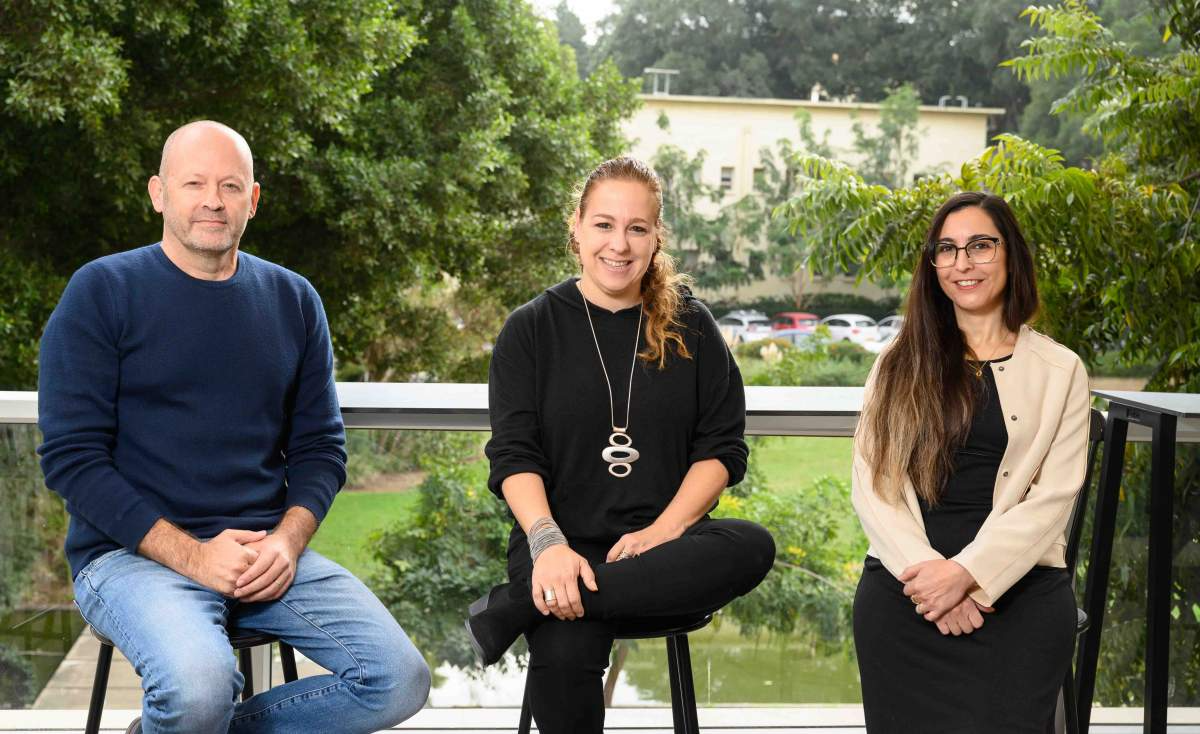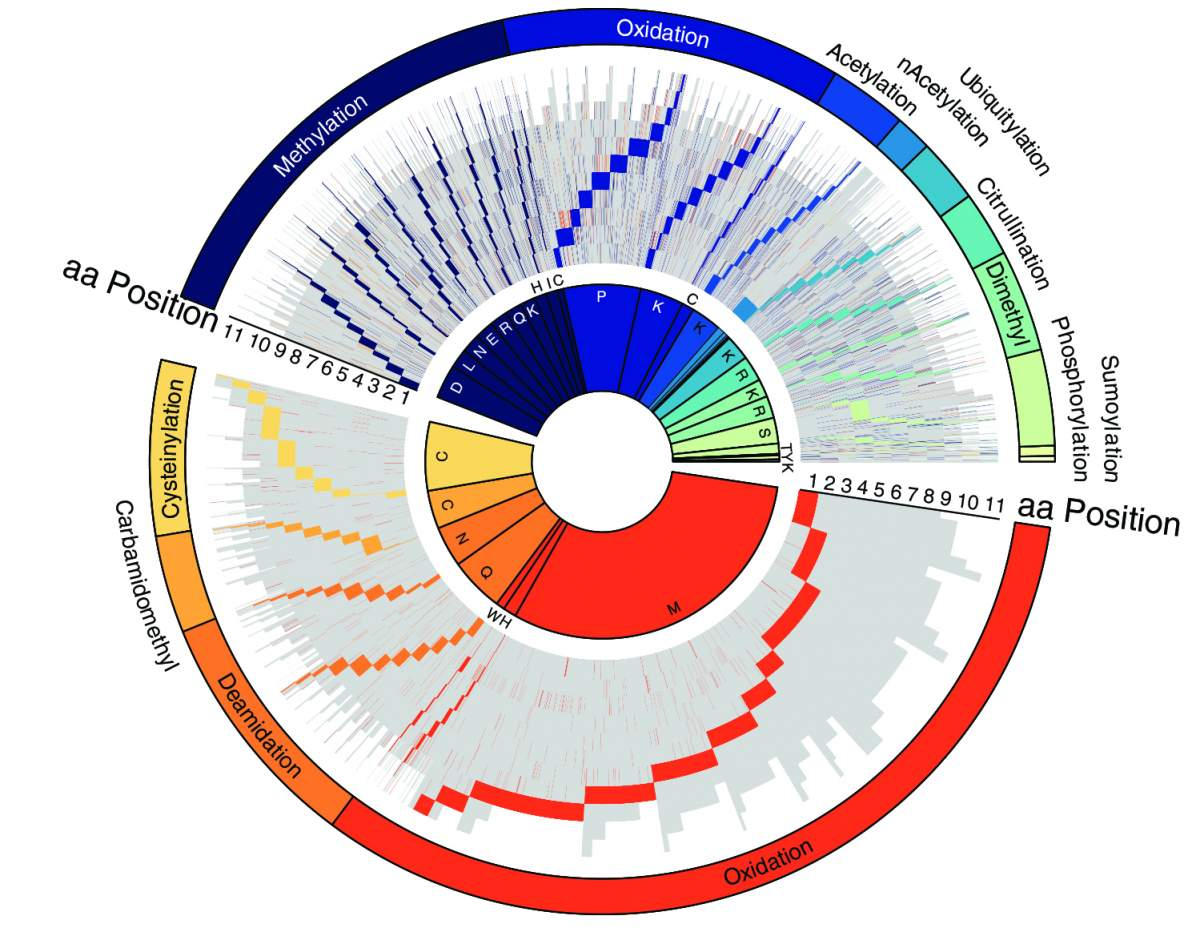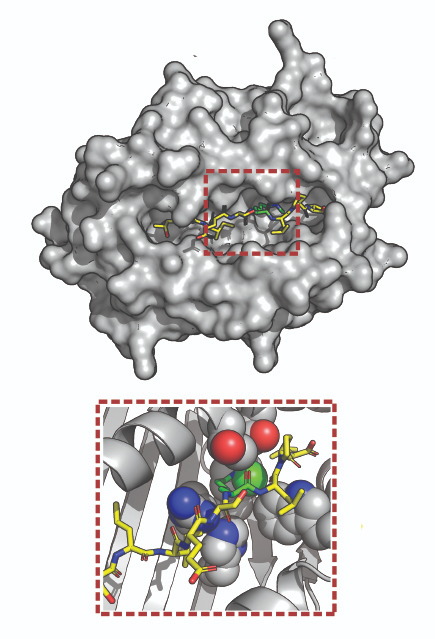The Protein Wears Prada
A new computational method that tracks multiple protein modifications promises to shed new light on unsolved biomedical problems
Just as wearing a new outfit can cause us to assume a different persona, so a chemical tag “worn” by a protein can make that molecule unrecognizable. An entire wardrobe of tags – called protein modifications, because they modify the protein’s original sequence – helps the thousands of proteins in our bodies perform their versatile tasks, but the modifications make life difficult for scientists and physicians seeking to identify these vital molecules. Prof. Yifat Merbl’s lab at the Weizmann Institute of Science has taken up the challenge of simultaneously detecting large numbers of modified proteins – together with all their trappings.
Wearing such tags, known as protein modifications, can be as “life changing” as donning a superhero getup or a tiara. The tags can affect nearly all of the proteins’ essential properties – including stability, location in the cell and their binding to other molecules, and they might mark diseased proteins for destruction or determine how well a protein, such as a tumor suppressor, will do its job. That’s why detecting and analyzing modified proteins is essential for the study of various body processes and diseases. For example, identifying proteins that have been modified in a way that’s unique to cancer cells might help pick out and destroy these cells more effectively; searching for other kinds of irregular modifications might help scientists explain and perhaps even treat autoimmune diseases, in which the immune system mistakenly attacks the body’s own tissues.

But consider the scope of the challenge. There are some 20,000 protein-coding genes in the human genome, each of which can come in four or five versions, which adds up to about 100,000 possible protein sequences. Once a protein is created, it can be chemically modified by one or more of some 200 different tags. Multiply that by the fact that these tags can attach to a protein molecule at multiple positions, and you get a virtually limitless number of possible tagging combinations and, consequently, of differently modified proteins.
Standard methods cannot recognize these modified proteins. Each protein has a unique sequence of amino acid building blocks that allows it to be identified by comparing this sequence to protein blueprints in reference libraries, but modifications get in the way of this recognition because they alter the properties of the amino acids. As analyzing large numbers of such alterations simultaneously has been exceedingly difficult, a broad study of modified proteins – one that would ask open-ended questions – was too challenging. Thus most studies have, until now, tended to narrowly focus on just a few specific modifications.
“Looking at the effects of proteins without the changes that happen in them after they have been created limits our understanding of the true complexity of biological processes,” explains Merbl, of Weizmann’s Systems Immunology Department. “My lab set itself the goal of creating a novel computational tool that can track down dozens of protein modification types in an unbiased manner.”

The search strategy developed by Merbl and her team looks for numerous alterations in parallel, rather than seeking them out individually, as was done in the past. The scientists call their system PROMISE (Protein Modification Integrated Search Engine), and it lives up to its name: It can identify some 30 modifications within six hours, whereas existing methods could identify only three at a time and took about two weeks to do it. Development of the system was led by Assaf Kacen, in collaboration with Aaron Javitt; both were PhD students in Merbl’s lab.
“PROMISE supplies us with new glasses, providing researchers with a broader picture of biological processes, and at a higher resolution than ever before,” Merbl says. “We can now use this tool to address unsolved biomedical problems by reexamining various kinds of existing datasets.”
As the first application of PROMISE, Kacen, Javitt and other members of Merbl’s team decided to tackle a fundamental question about cancer: whether and how protein modifications affect the immune system’s ability to eliminate tumors. The researchers applied PROMISE to examine hundreds of thousands of peptides (protein fragments) from more than 200 cell and tissue samples relevant to cancer. In particular, the team focused on peptides known as tumor antigens. Present on the surface of tumor cells, the antigens signal to the immune system that these cells are abnormal and should be eliminated. After checking the samples for some 30 combinations of protein modifications, the scientists managed to identify a new subset of peptides, about 12,000 in total, containing modifications that had not previously been detected by other computational tools. The result is the most comprehensive atlas available of modified antigens characteristic of cancerous tumors. It includes a new “dictionary,” a reference showing how modifications occurring at specific sites in the peptides may affect the immune system’s recognition of the cancerous cell.

This knowledge is critical because some of these modifications might explain how cancer cells “cloak” themselves and are then able to evade the T cells used in cancer immunotherapy. This understanding could in turn help researchers develop “decloaking” methods to improve the targeted attack against the tumor. For example, a phosphorus tag, which has a negative charge, can enable a cancerous peptide to avoid recognition by T cells, but engineering T cell receptors that can spot such tags may expand the cells’ therapeutic potential.
In future studies, PROMISE might help reveal peptide-modification combinations that mislead immune cells into attacking healthy cells, causing autoimmune diseases. The tool might also provide new insights into neurodegenerative disorders and other diseases.

“Being able to quickly analyze protein modifications can help us better diagnose numerous pathological processes, assess the response to drugs and ultimately develop new therapies,” Merbl says.
Science Numbers
More than 10 percent of proteins in the human genome are enzymes that chemically modify other proteins. Standard analytical tools that take into account neither these modifications nor mutations and other deviations from the genetic blueprint, identify only 50 to 80 percent of peptides in biological samples. In other words, in any tissue sample, up to 50 percent of peptides might go unidentified.
Study participants included Drs. Matthias P. Kramer and Merav D. Shmueli of Weizmann’s Systems Immunology Department; Drs. David Morgenstern and Yishai Levin of the Nancy and Stephen Grand Israel National Center for Personalized Medicine; Tomer Tsaban and Prof. Ora Schueler-Furman of the Hebrew University of Jerusalem; Dr. Guo Ci Teo, Dr. Felipe da Veiga Leprevost, Dr. Fengchao Yu and Prof. Alexey I. Nesvizhskii of the University of Michigan; Dr. Eilon Barnea and Prof. Arie Admon of the Technion – Israel Institute of Technology; Prof. Lea Eisenbach of Weizmann’s Immunology and Regenerative Biology Department; and Prof. Yardena Samuels of Weizmann’s Molecular Cell Biology Department.
Publication: Assaf Kacen, et al, Post-translational modifications reshape the antigenic landscape of the MHC I immunopeptidome in tumors, Nature Biotechnology (2022) DOI: 10.1038/s41587-022-01464-2
Original Story Source: Weizmann Institute of Science

 Alerts Sign-up
Alerts Sign-up